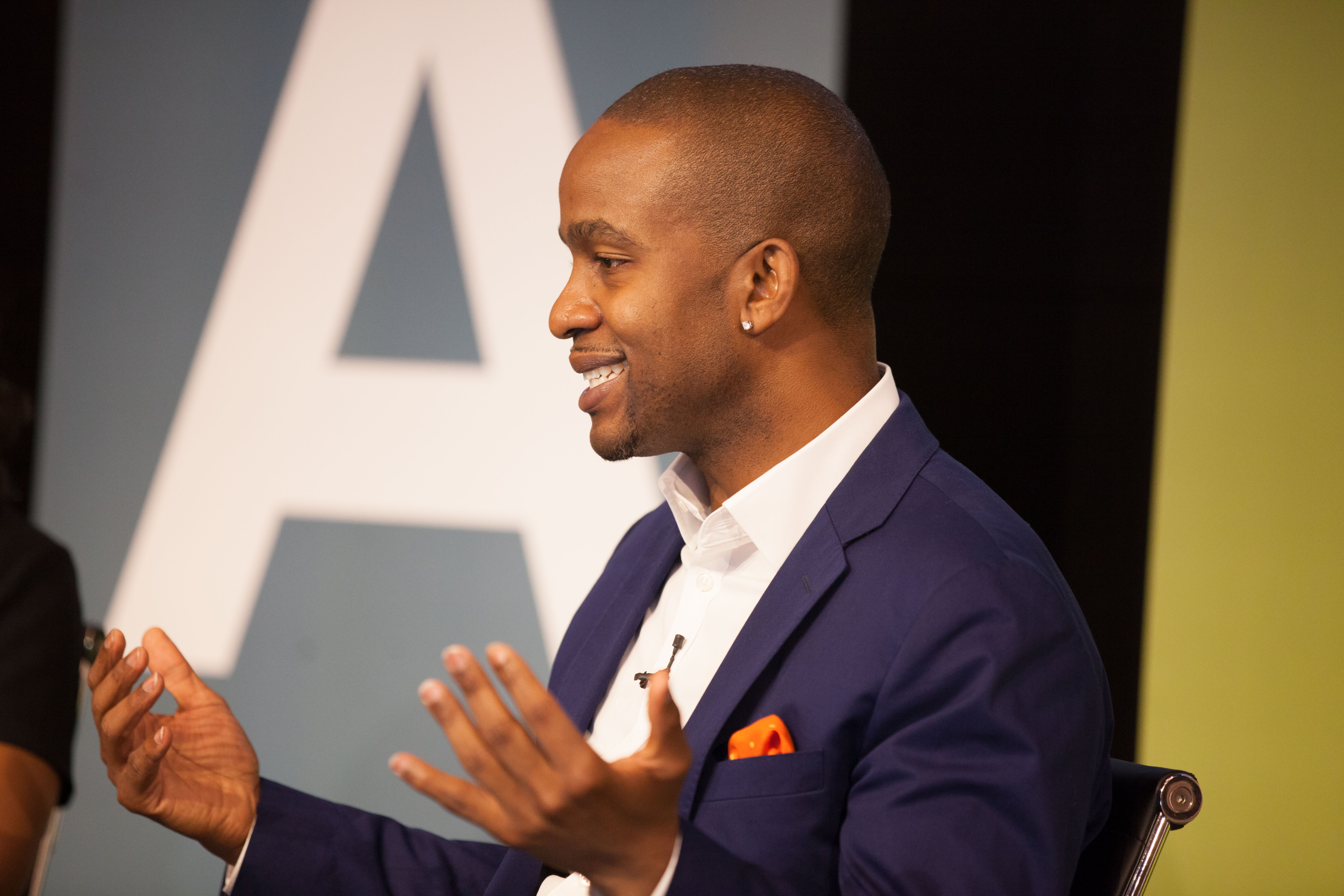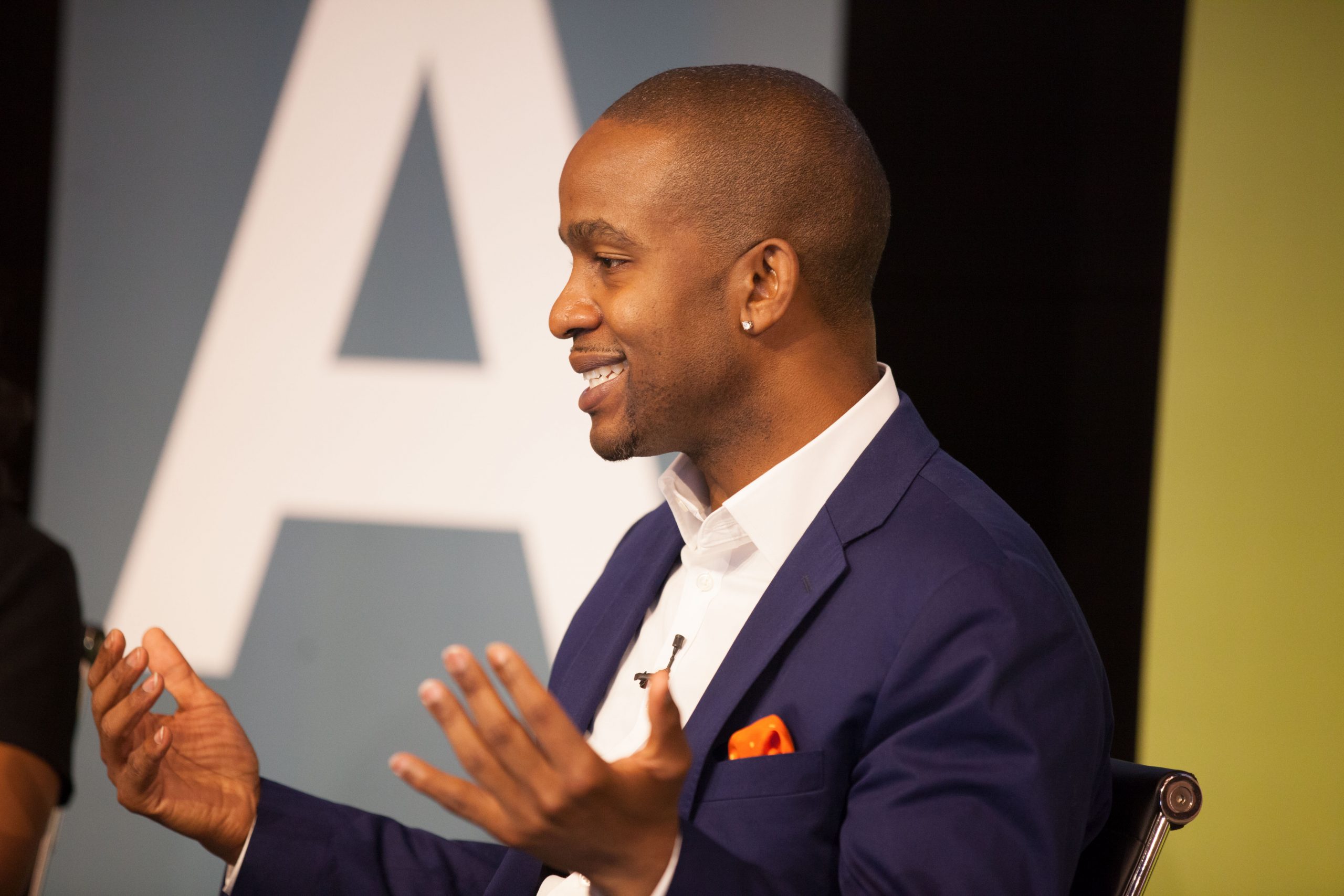
Wade Davis is a thought leader, writer, public speaker, and educator on gender, race, and orientation equality. Davis is currently a senior consultant at YSC, a global think tank and leadership consulting firm. Davis played for the Tennessee Titans, the Washington Redskins, and the Seattle Seahawks, as well as for two different teams within the NFL Europe league. Starting in 2014, Davis became the NFL’s first Diversity and Inclusion consultant, focused on ensuring that all LGBT individuals throughout the league have a safe and affirming space.
Wade delivered the “Intersections of Inclusion” keynote speech at Diversity Best Practices’ Network and Affinity Leadership Congress (NALC) event recently. In that speech, Wade delivered a powerful message of family, intersectionality and inclusive culture. We followed up with him about some of those topics and others in the “diversity dialogue” below.
A topic that has become more and more central to the diversity and inclusion conversation is that of intersectionality. Tell us how you have seen this play out in the work you do with organizations. Why is this such an important piece of this work? What have been some strategies you have seen that organizations are using to address intersectionality?
Intersectionality at its essence is an account of systems of power and the identities created by those power structures. Intersectionality requires us to understand that discrimination is never the outcome of a single factor. So as organizations look to understand issues of diversity, intersectionality demands that they look at issues of inclusion too. Organizations must never just simply hire diverse employees without also completely changing the organizational culture. Most organizations incorrectly assume that their organizational culture isn’t a part of the problem. More than likely it’s an and/both situation, otherwise the problem would have never existed.
We are starting to work with organizations to bring together their BRG or affinity groups and have them talk openly and honestly about the impact of holding multiple identities. And we are pushing organizations to invite senior leaders into the room to listen with great intention and empathy to see themselves within the stories of others. We work with them to co-create a strategy that aligns with their overall business goals and allows all employees to feel heard, empowered and invested in the organization’s success.
Another challenge for many organizations has been that of engaging middle managers in the diversity and inclusion conversation. Some would argue that diversity and inclusion has actually caused the marginalization of this group. What are your thoughts on that and how do you see it being resolved so that we can all move forward together?
Middle managers are usually the individuals responsible for executing many of the D&I initiatives handed down by leadership. So they play a vital role. And many would argue that D&I failures are fairly or unfairly laid at their feet. The truth is everyone within the organization is responsible for the success of having a diverse and inclusive workforce. So until everyone is held accountable, feels personally responsible and is educated on why D&I is vital to an organization’s success, we will continue to see finger pointing and no ‘real’ traction.
It feels like we have been talking about the research about and business case for D&I forever. What is it going to take for organizations to move beyond this and into action? What are some examples of bold actions leaders have taken to move diversity and inclusion forward in their organizations?
The myth was that leaders needed us to make the business case in order for them to take D&I seriously. Well the business case was made and let’s be honest — we got very VERY little. And the personal narrative was used to pull at the heartstrings of people in power. And the two in tandem have been proven to be more effective. But I believe real change will only happen when leaders at the top can be held accountable not by others who also have power but by those most marginalized and when leaders truly believe that D&I factors into the businesses sustainability. Truthfully if the leadership doesn’t believe that diversity matters to the success of an organization, nothing will change. One example, and I won’t name the organization because they still have problems to work through, is of a CEO who was hired into an organization and intentionally hired women into the C-Suite (giving them real power) and now we are watching that organization thrive. Intentional action and risk taking is needed in D&I.
In your work with organizations, what are the things that give you hope for the future of diversity and inclusion?
I get truly excited about D&I when I talk to a CEO or business leaders and they say – “I have a problem and I’m going to invest the time, the money and the people to make sure it’s done right.” I get excited when leaders are willing to have the hard, very hard conversation about how to make transformational change not just focus on the one-time transactions that make everyone feel good but are ultimately fleeting and not a part of something sustainable. I get excited when senior leaders are willing to be educated on systems of power, intersectionality, and the like. When they understand that their organization must go well beyond unconscious bias training and do the work of conscious inclusion. When we can discuss the importance of building relationships across race, class, ability, gender, sexual orientation and more. When leaders understand they must change the ‘default’ for what it means to hire the best and brightest, as well as understand that intelligence and potential is located within everyone, you just have to have the courage to believe in everyone. Maya Angelou said, “Courage is the most important virtue, because without it, no other virtue can be practiced consistently.” I am hopeful I’ll meet more leaders with real courage around D&I.

